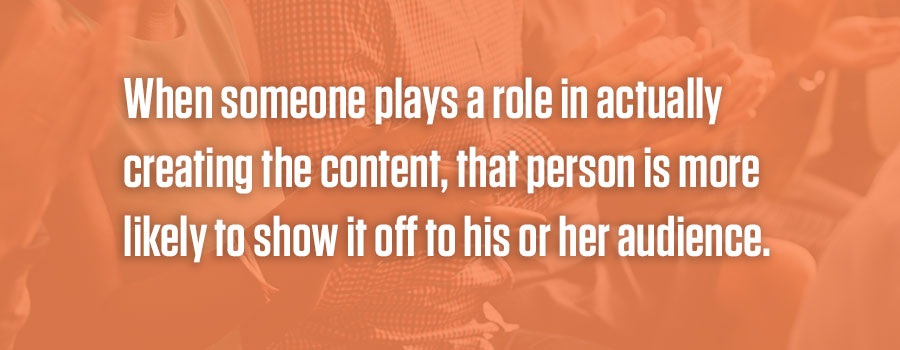
How To Use The Relationship Strategy In Your Content Marketing Efforts
If building links with your content is your goal, you need to choose topics strategically. Previously, I wrote about how you can use the past success strategy to help you come up with topics. There are two other marketing strategies we use to create content that is likely to generate links. Today, we will go over the relationship strategy and how you can use it to generate links back to your site.
What Is the Relationship Strategy?

Getting people to link to your content is always tough. One way to increase the chance of a link is to have that link be part of the creation of that content. When someone plays a role in actually creating the content, that person is more likely to show it off to his or her audience. The basis for the relationship strategy is to have your contributors participate in the process (building a relationship with them) and give them a way to show off what you have created together. I have done this two separate ways — via interviews and e-books — and both have led to links being created for our site. We will walk through both options in this post.
Interviews
Reaching out to people to solicit their opinion — so you can quote them in a piece you are writing — is a great way to build a relationship with that publisher. In the past, I have looked to associations, thought leaders and other industry professionals to contribute their opinions to a blog post we are writing for the client. Because the publisher is quoted, he or she is more likely to share/link to the content that the two of you created. But there is some strategy involved, regarding whom you should pick if you are looking to acquire links with this interview.
I see a lot of people find anyone they can who will give them a sound bite, hoping that once they let them know they were quoted, they will just find some way to link to the post. The problem is, that type of choice typically ends with a social share. Instead, if gaining a link is your goal, target publishers or websites that normally link to their media mentions, like you see below:
Both examples link to the places from which their people are referenced. Quoting a source in a story will increase your chance of landing that link you are looking for, since these publishers show a behavioral pattern of doing just that.
Contributor E-Books
One of the bigger trends I see on blogs today is the contributor roundup. Consider the following posts:
- https://www.inetsolutions.org/ultimate-list-1-seo-tips-80-seo-experts-2016-edition/
- http://www.docurated.com/all-things-productivity/creating-a-successful-digital-marketing-plan
In these examples, publishers use tools such as HARO or email outreach to gather a number of industry professionals and have them give a short comment about a topic. This can be great for social shares because, typically, these posts are packed with great information and the people who participated are more likely to share the posts when they have participated. Yet just like the interview tactic we covered above, it isn’t a great way to have those people generate links for you.
Typically they are not going to write a post saying, “Hey, look where I contributed today …” That is much more of a social share action than a linking action. Instead, we have those industry professionals give us their best blog post on the topic to create an e-book. Now that we have this e-book in PDF form, we can turn that into an embeddable piece of content (linked is my post on the value of embeddable content). Once you have that embeddable e-book, you can send that to all of your contributors. They are much more likely to place that on their blog with a link pointing back to where their readers can get a copy of it. Not only do you stand a chance of getting a link from all of your contributors, but you have a great piece of content you can pitch to other publishers to share with their readers to generate even more links to your website.
Link building is a tough job. As more companies invest in the practice, it is only going to get more difficult. One way to have your outreach message stand out is to make sure this is something more than just an infographic or story a publisher should check out. Showing the publisher off to your audience as an expert and then continuing to market that piece of content exposes the publisher to new audiences. By having publishers help you create something that you are going to share with your audience and then continue to pitch to new audiences, you are creating a win-win.




